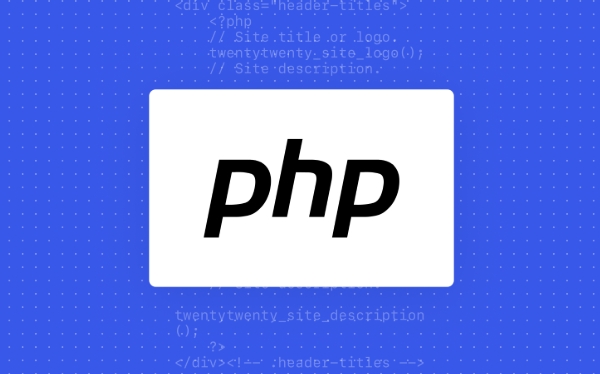The u modifier in PHP ensures proper handling of UTF-8 encoded strings in regular expressions. 1. It tells the PCRE engine that both the pattern and input string are UTF-8 encoded. 2. Without u, matching Unicode characters may fail or cause errors like "Malformed UTF-8 characters". 3. With u, features like Unicode codepoint escapes (\x{4E00}), property classes (\p{L}), and emoji validation work reliably. 4. Use u when handling international text such as names, email addresses, domains, emojis, or user-generated content. 5. Add u after the closing regex delimiter to enable UTF-8 support. 6. Common mistakes include omitting u when using \p{}, using . without u, or relying on utf8encode() alone. 7. Always use u with preg* functions for consistent Unicode handling in real-world scenarios.

In PHP, the u modifier in regular expressions is used to handle patterns as UTF-8 encoded strings. Without it, regex operations may behave unexpectedly when working with non-ASCII characters like accented letters, Cyrillic, or emoji.

What Does the u Modifier Actually Do?
The main job of the u modifier is to tell PHP’s PCRE (Perl Compatible Regular Expressions) engine that both the pattern and the input string are UTF-8 encoded.

Without the u modifier:
- Regex might not match Unicode characters correctly.
- You might get errors or warnings like "Malformed UTF-8 characters" if your pattern contains such characters.
With u, things like matching a Chinese character (\x{4E00}), checking for Unicode property classes (\p{L} for letters), or even validating emoji become reliable.

Example:
preg_match('/^.$/u', 'é'); // Matches
preg_match('/^.$/', 'é'); // Doesn't matchWhen Should You Use the u Modifier?
Use it whenever you're dealing with international text, which is most of the time these days.
Here are some common cases:
- Matching or validating names in different languages (like 姓名 or имя)
- Working with email addresses or domains that use internationalized domain names (IDN)
- Handling user-generated content that includes emojis or special symbols
Even if your current data seems ASCII-only, adding u can help prevent future issues when Unicode input sneaks in unexpectedly.
How to Add the u Modifier in Practice
Adding the u modifier is straightforward — just append it after the closing delimiter in your regex pattern.
Examples:
// Match any Unicode letter
preg_match('/\p{L}/u', $text);
// Match a full Unicode word
preg_match('/^\w $/u', $word);
// Match an emoji
preg_match('/^\x{1F600}$/u', '?');Important notes:
- If you're using Unicode codepoint escapes like
\x{20AC}, you must includeufor them to work. - The
umodifier also affects how quantifiers and anchors behave with multibyte characters.
Common Mistakes and Gotchas
A few things people often miss when using u:
- ? Forgetting to add
uwhen using\p{}or\P{}Unicode properties - ? Using
.withoutuon Unicode text — it won’t match multibyte characters - ? Assuming
utf8_encode()or similar functions fix everything — they don’t help if the regex isn’t set up right
Also, be aware that mb_ereg functions exist, but they follow different syntax rules — stick with preg_* and u for consistency unless you have a specific reason not to.
So yeah, just remember:
If you're using UTF-8 (and you probably are), always add the u modifier to your regex patterns. It's not complicated, but it makes a big difference in handling real-world text properly.
The above is the detailed content of what is the 'u' modifier in php regex. For more information, please follow other related articles on the PHP Chinese website!

Hot AI Tools

Undress AI Tool
Undress images for free

Undresser.AI Undress
AI-powered app for creating realistic nude photos

AI Clothes Remover
Online AI tool for removing clothes from photos.

Clothoff.io
AI clothes remover

Video Face Swap
Swap faces in any video effortlessly with our completely free AI face swap tool!

Hot Article

Hot Tools

Notepad++7.3.1
Easy-to-use and free code editor

SublimeText3 Chinese version
Chinese version, very easy to use

Zend Studio 13.0.1
Powerful PHP integrated development environment

Dreamweaver CS6
Visual web development tools

SublimeText3 Mac version
God-level code editing software (SublimeText3)

Hot Topics
 How do I implement authentication and authorization in PHP?
Jun 20, 2025 am 01:03 AM
How do I implement authentication and authorization in PHP?
Jun 20, 2025 am 01:03 AM
TosecurelyhandleauthenticationandauthorizationinPHP,followthesesteps:1.Alwayshashpasswordswithpassword_hash()andverifyusingpassword_verify(),usepreparedstatementstopreventSQLinjection,andstoreuserdatain$_SESSIONafterlogin.2.Implementrole-basedaccessc
 How can you handle file uploads securely in PHP?
Jun 19, 2025 am 01:05 AM
How can you handle file uploads securely in PHP?
Jun 19, 2025 am 01:05 AM
To safely handle file uploads in PHP, the core is to verify file types, rename files, and restrict permissions. 1. Use finfo_file() to check the real MIME type, and only specific types such as image/jpeg are allowed; 2. Use uniqid() to generate random file names and store them in non-Web root directory; 3. Limit file size through php.ini and HTML forms, and set directory permissions to 0755; 4. Use ClamAV to scan malware to enhance security. These steps effectively prevent security vulnerabilities and ensure that the file upload process is safe and reliable.
 What are the differences between == (loose comparison) and === (strict comparison) in PHP?
Jun 19, 2025 am 01:07 AM
What are the differences between == (loose comparison) and === (strict comparison) in PHP?
Jun 19, 2025 am 01:07 AM
In PHP, the main difference between == and == is the strictness of type checking. ==Type conversion will be performed before comparison, for example, 5=="5" returns true, and ===Request that the value and type are the same before true will be returned, for example, 5==="5" returns false. In usage scenarios, === is more secure and should be used first, and == is only used when type conversion is required.
 How do I perform arithmetic operations in PHP ( , -, *, /, %)?
Jun 19, 2025 pm 05:13 PM
How do I perform arithmetic operations in PHP ( , -, *, /, %)?
Jun 19, 2025 pm 05:13 PM
The methods of using basic mathematical operations in PHP are as follows: 1. Addition signs support integers and floating-point numbers, and can also be used for variables. String numbers will be automatically converted but not recommended to dependencies; 2. Subtraction signs use - signs, variables are the same, and type conversion is also applicable; 3. Multiplication signs use * signs, which are suitable for numbers and similar strings; 4. Division uses / signs, which need to avoid dividing by zero, and note that the result may be floating-point numbers; 5. Taking the modulus signs can be used to judge odd and even numbers, and when processing negative numbers, the remainder signs are consistent with the dividend. The key to using these operators correctly is to ensure that the data types are clear and the boundary situation is handled well.
 How can you interact with NoSQL databases (e.g., MongoDB, Redis) from PHP?
Jun 19, 2025 am 01:07 AM
How can you interact with NoSQL databases (e.g., MongoDB, Redis) from PHP?
Jun 19, 2025 am 01:07 AM
Yes, PHP can interact with NoSQL databases like MongoDB and Redis through specific extensions or libraries. First, use the MongoDBPHP driver (installed through PECL or Composer) to create client instances and operate databases and collections, supporting insertion, query, aggregation and other operations; second, use the Predis library or phpredis extension to connect to Redis, perform key-value settings and acquisitions, and recommend phpredis for high-performance scenarios, while Predis is convenient for rapid deployment; both are suitable for production environments and are well-documented.
 How do I stay up-to-date with the latest PHP developments and best practices?
Jun 23, 2025 am 12:56 AM
How do I stay up-to-date with the latest PHP developments and best practices?
Jun 23, 2025 am 12:56 AM
TostaycurrentwithPHPdevelopmentsandbestpractices,followkeynewssourceslikePHP.netandPHPWeekly,engagewithcommunitiesonforumsandconferences,keeptoolingupdatedandgraduallyadoptnewfeatures,andreadorcontributetoopensourceprojects.First,followreliablesource
 What is PHP, and why is it used for web development?
Jun 23, 2025 am 12:55 AM
What is PHP, and why is it used for web development?
Jun 23, 2025 am 12:55 AM
PHPbecamepopularforwebdevelopmentduetoitseaseoflearning,seamlessintegrationwithHTML,widespreadhostingsupport,andalargeecosystemincludingframeworkslikeLaravelandCMSplatformslikeWordPress.Itexcelsinhandlingformsubmissions,managingusersessions,interacti
 How to set PHP time zone?
Jun 25, 2025 am 01:00 AM
How to set PHP time zone?
Jun 25, 2025 am 01:00 AM
TosettherighttimezoneinPHP,usedate_default_timezone_set()functionatthestartofyourscriptwithavalididentifiersuchas'America/New_York'.1.Usedate_default_timezone_set()beforeanydate/timefunctions.2.Alternatively,configurethephp.inifilebysettingdate.timez






